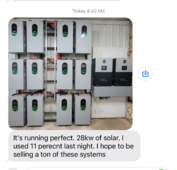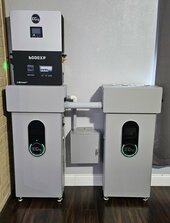SignatureSolarJames
Try Solar, the Grid will always take you back
Love seeing these installs.
I remember 10 years ago as an installer when this was totally impossible, so thankful for the DIY community as well as @Will Prowse ‘s wonderful platform

I remember 10 years ago as an installer when this was totally impossible, so thankful for the DIY community as well as @Will Prowse ‘s wonderful platform





